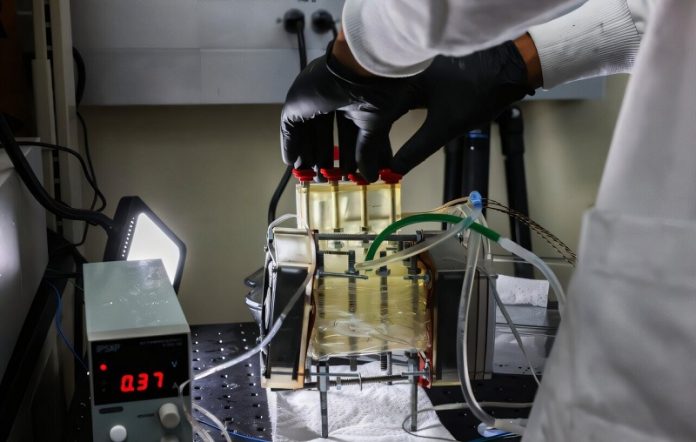
Turning air into drinking water sounds like something from a sci-fi movie, but researchers at the University of Nevada, Las Vegas (UNLV) have made it a reality.
A team led by mechanical engineering professor H. Jeremy Cho has developed a new device that can capture large amounts of water from the air, even in places with very low humidity.
Their research, published in Proceedings of the National Academy of Sciences, introduces a breakthrough in atmospheric water harvesting.
This technique involves collecting water vapor from the air and converting it into a usable form. Most existing methods only work well in humid conditions and struggle below 30% humidity.
However, Cho’s new device can capture water even in dry regions like Las Vegas, where humidity can drop as low as 10%.
The key to this new technology is a special membrane inspired by nature. Cho’s team looked at tree frogs and air plants, which can collect water from the air and store it.
Inspired by these natural processes, they developed a “hydrogel membrane skin” that pulls water vapor from the air and holds it in a liquid salt solution.
This liquid salt solution makes it easier to collect and process the captured water.
The researchers successfully tested the device outdoors in Las Vegas and found that it could generate about one gallon of water per day from a small, 3-by-3-foot surface. In more humid conditions, the device could produce up to three times that amount.
The device doesn’t just rely on capturing water—it can also run on solar power. Las Vegas gets plenty of sunlight, with around 300 sunny days each year.
This abundant sunlight can provide the energy needed to power the device, making it more sustainable and potentially lowering costs.
This water-harvesting technology could be a game-changer for arid regions facing water shortages. “Our water resources are depleting and our planet’s climate is changing,” said Cho. “To reach sustainability, we have to change our habits. This whole idea seemed like science fiction, but this is possible, and we’re actually doing it.”
The team’s work shows that with the right technology and inspiration from nature, it’s possible to create new solutions for old problems. This innovative device could one day provide a reliable source of clean water in places where it’s desperately needed.
Source: University of Nevada, Las Vegas.



